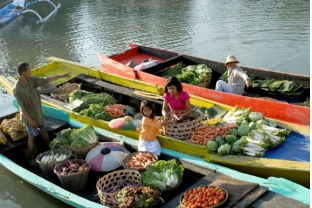
Building the ASEAN Community
Food Safety in Agri-Products
Enhancing Food Safety through Harmonized Quality Standards
Over the years, ASEAN has made a concerted effort to enhance food control systems and procedures to ensure the freer movement of safe, healthy and quality foods within the region. It is essential that food and agricultural products from ASEAN meet internationally recognized standards. ASEAN has been focusing its efforts on the harmonisation of quality standards as well as assurance of food safety for primary production to ensure that agricultural products are safe for consumption. The rising demand for safe foods requires that quality assurance systems based on agricultural best practices are in place to facilitate intra-ASEAN trade, to improve access to global markets for ASEAN agricultural products, as well as to improve viability for farmers and help sustain a safe food supply. Acknowledging these growing requirements, ASEAN has adopted several best practices to support the agriculture industry. ASEAN is also in the process of promoting these regional agricultural best practices by aligning national standards across the region and by developing such standards when not available.
The ASEAN Good Agricultural Practices for Fresh Fruit and Vegetables, known as “ASEAN GAP”, was adopted in 2006 as a voluntary standard for the production, harvesting and post-harvest handling of fruits and vegetables in the region. The ASEAN GAP consists of four modules covering food safety; environmental management; worker health, safety and welfare; and produce quality.
The ASEAN Guidelines for Good Aquaculture Practices on Food Fish, known as ASEAN GAqP was adopted in 2014 as a voluntary standard for pre-production, production, harvesting and post-harvest handling prior to transportation of food fish to prevent or minimize the risks of food safety.
The ASEAN Good Animal Husbandry Practices, known as ASEAN GAHP was adopted in 2014 as a voluntary standard for production, handling, transportation and storage of chicken and its products within the farm to prevent or minimize risk of food safety and biosecurity hazards occurring in the poultry industry.
The ASEAN Standard for Organic Agriculture, known as ASOA was adopted in 2014 as a voluntary standard for production, post-harvest, processing, handling, storage, transport and labeling of organic produces, processed products for plants and wild harvest.
1. ASEAN GAP 2. ASEAN GHP 3. ASEAN SOA For more information, please visit http://www.asean.org/communities/asean-economiccommunity/item/asean-cooperation-in-food-agriculture-and-forestry-major-achievements or send an email to aimo@asean.org
Source: asean.org
Share: